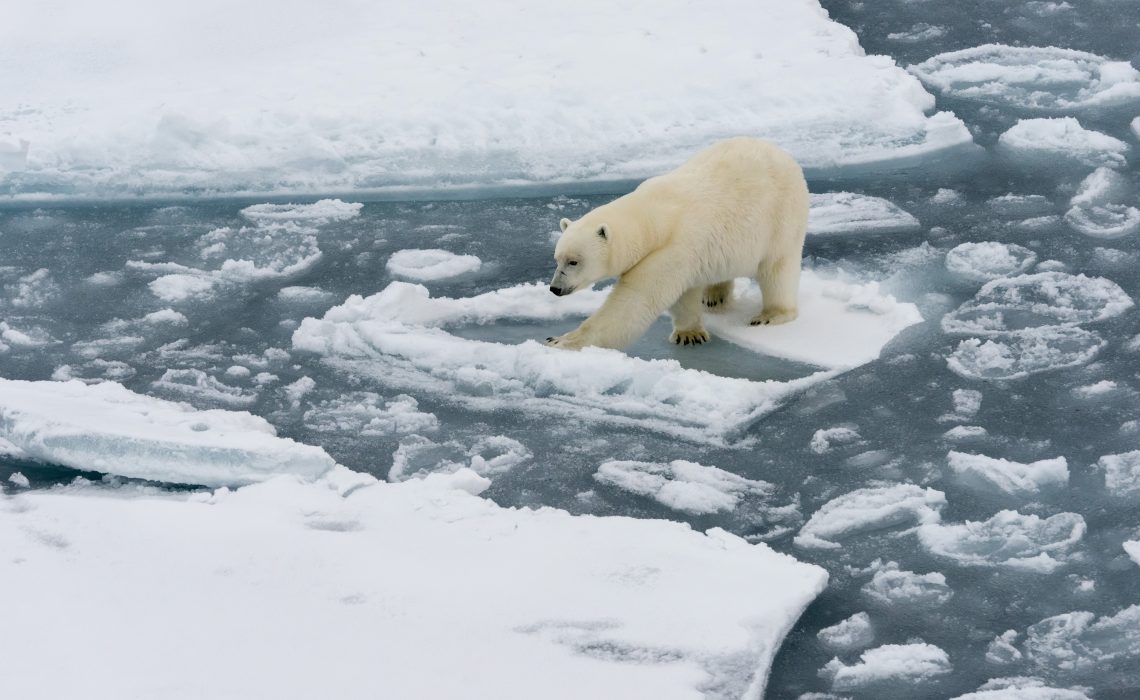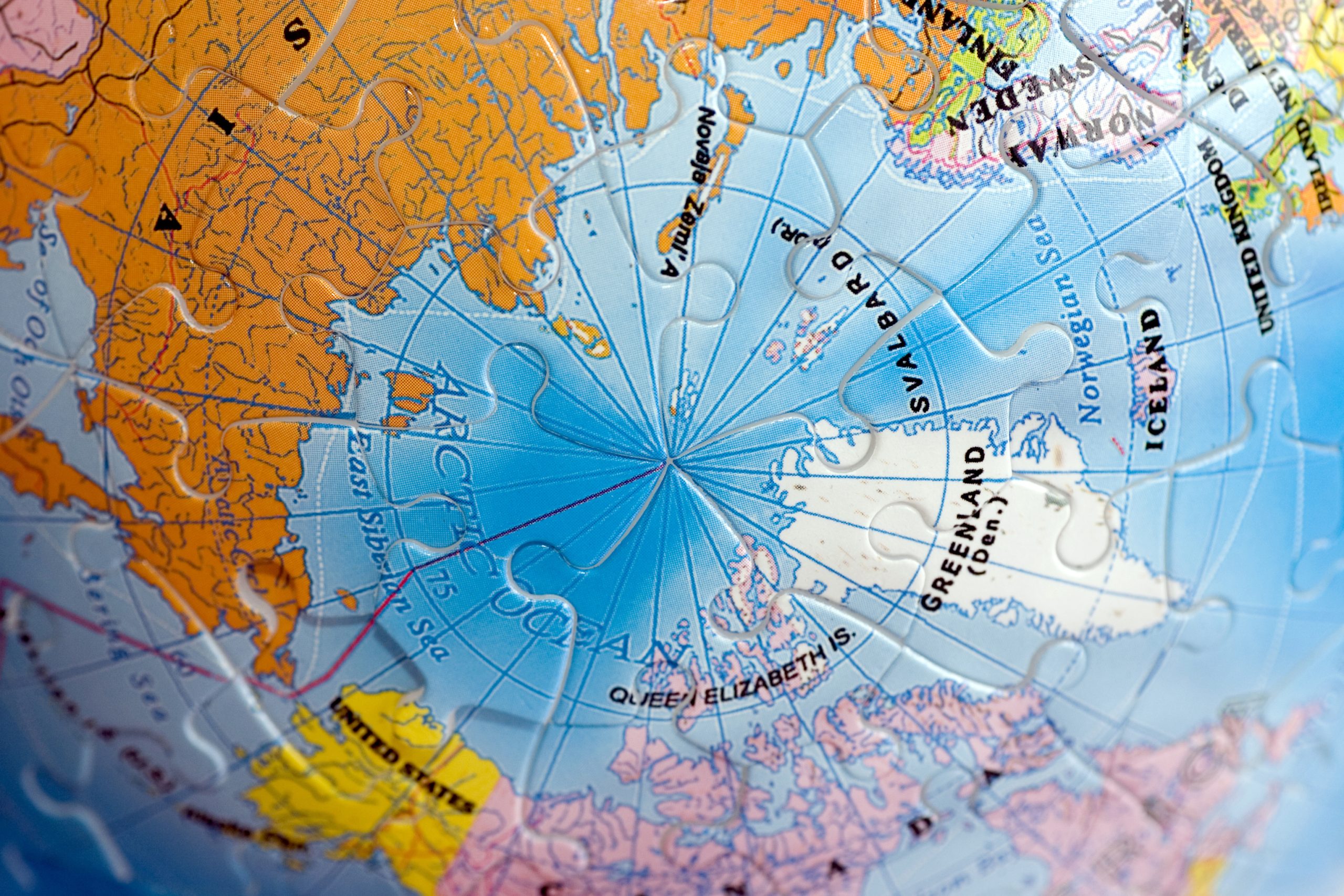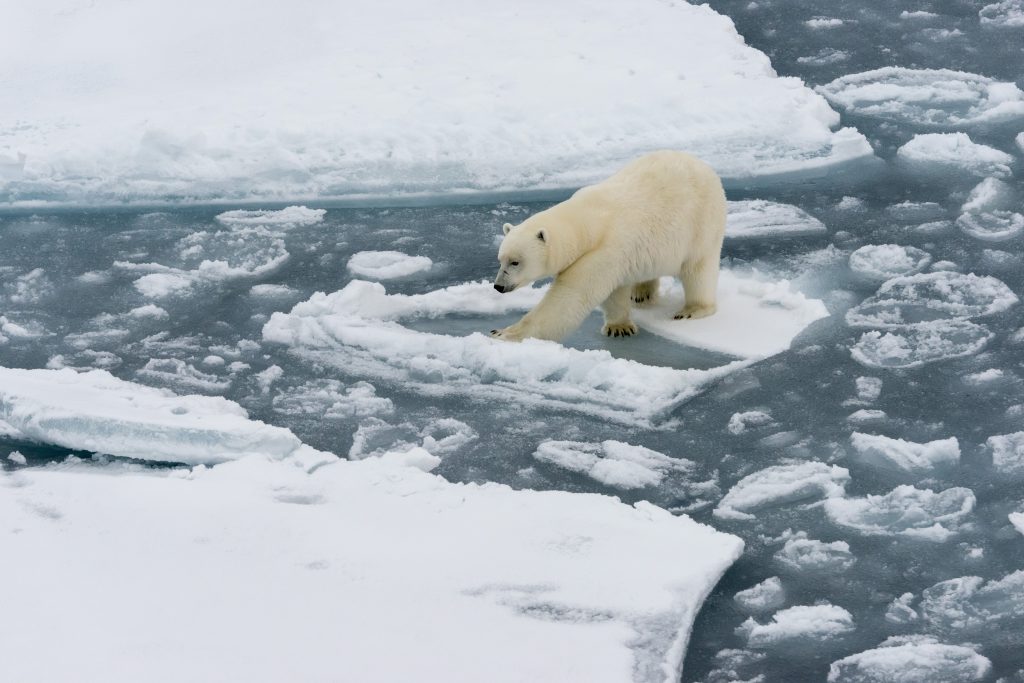
Blink and you might have missed these news items….
My colleague and fellow adventurer to Falklands, South Georgia and Antarctica, Brad Borkan – co-author extraordinaire of ‘Audacious Goals, Remarkable Results‘, writes about how an early explorer, a statesman and an engineer have shaped our current world by setting themselves audacious goals and not being put off by the naysayers!
He pointed out to me that we are seeing these audacious goals now in relation to the Arctic. We know the ice is melting. We know our wildlife – the bears, the seals, whales, foxes, birds – are suffering with the break up and disappearance of the ice shelves that they live, hunt and breed on.
BUT, things are happening! One or two humans are aiming high – audacious goals are needed to save the Arctic. Here is what we are seeing….
Floating sea ice used to cover the Arctic Ocean for most of the year – it was a given – providing a barrier protecting the marine life ecosystem below it from many of the human pollutions accelerating our climate change. With this floating ice now breaking up and reducing by around an eighth every 10 years, we should be alarmed. Arctic Explorer Pen Hadow is. Having crisscrossed the Arctic Ocean on ski’s both solo and accompanied when faced with swimming rather than ski-ing between the ice-floes he decided he had to take some action.
If you head to the top of our world and could look down on the North Pole, the Central Arctic Ocean is the area of sea – or hopefully ice – that the countries Norway, Greenland, Canada, USA and Russia fit around.

Hadow is calling for a Marine Protection Area for the whole of the middle of the Arctic Ocean, using his 90 North Foundation as the catalyst to foster international co-operation. What is he calling for? No fishing, no shipping, no oil & gas, no mining in the Arctic Ocean – none at all! His efforts were recognised in 2023 when he was awarded the Shackleton award for the Protection of the Polar Regions.
What has been achieved so far?
The Arctic Ocean is unstudied. We don’t yet understand the impact of industrial fishing on it if that happened. Seriously??? Am I the only one that would read that sentence and say we only have to look at our other oceans where we are depleting it of fish, and starving our wildlife, and I think it would be very easy to work out what will happen!
At least in 2018 an agreement was made, not just by the countries that border this sea, but the likes of EU, Japan, China, not to allow industrial fishing there until more was understood. And the 90 North Foundation is spending thousands on research with the end result hopefully to convince these countries that it would be incredibly damaging to allow industrial fishing here.
This agreement was superseded by the UN Treaty which went a step further but there is currently a discussion whether protecting countries local ocean networks may work better than an international one. Currently most of the MPA’s in this region are within a country’s 200 mile Exclusive Economic Zone.
Scarily the largest MPA is around Canada’s Tuvaijuittuq – its know as the Last Ice Area MPA, because its expected to be the last area to melt when all other ice in the Arctic has gone!
Returning to Hadow, he feels it’s his ‘rest of life’ mission to achieve that audacious goal of an MPA for the whole of the Arctic Ocean. Want more details? This is a good ARTICLE.

Do you enjoy my writing?: Always optional, though Donating even a small amount occasionally, enables me to continue to be another voice for the environment, supporting organisations focussed on conservation and restoration through my blogs, video’s, giving my time on committees, raising awareness. Click on the Donate button, top right hand side of the page for more information on how I am contributing and why your donation counts.
WHAT’S THE CONNECTION BETWEEN OUTDOOR ICE RINKS AND SAVING THE ARCTIC ICE?
There’s a start up in the Netherlands looking to take an age old idea, that of creating outdoor ice rinks, and using it to increase the depth of the ice in the Arctic. Cool huh? Pardon the pun….
Villages in the Netherlands have an Ice Master, or Usmeester. As soon as it starts to get cold, they race to carefully flood fields, thin layer by thin layer, waiting for each to freeze between applications. Well, Arctic Reflections are looking to see if they can apply the same solution and the to the Arctic. By freezing thin layers on top of the existing ice which is about a metre thick they can add another 10 – 20 cm’s of ice, refreezing the top layer where the snow is and potentially preventing the ice floes prematurely breaking up.
The melting ice as we know is causing problems for both our wildlife – I refer you to the opening paragraphs and their issue – and of course our humans. Those indigenous to this area also need to be able to travel over the ice plus feed themselves and their families as they have for thousands of years. Predicting when the ice is safe to travel on is crucial to the Inuit communities.
Interestingly the theory is it might boost the Arctic Ice’s ability to reflect the sun’s rays back into the atmosphere by maintaining the melting ice sheet for longer until we can reduce the worlds CO2 levels sufficiently where it would start to regenerate itself.
The technique isn’t totally new, in that it’s being used in places such as Canada and Finland to make ice roads for example. So some experiments are taking place, let’s monitor how that goes. The thoughts are its a temporary solution, that might help the likes of the polar bears and seals by extending and strengthening the ice and other areas where the wildlife are being seriously threatened, but its not the solution to the human world reducing our carbon output, that still has to happen. More on this story at this LINK
Crazy ideas are needed. A few great people, that probably feel they are very ordinary, will turn them into audacious goals that hopefully they will achieve.

We need all the audacious ideas (that can turn into achievable goals) as we can get. Protecting our poles, protects all of life.